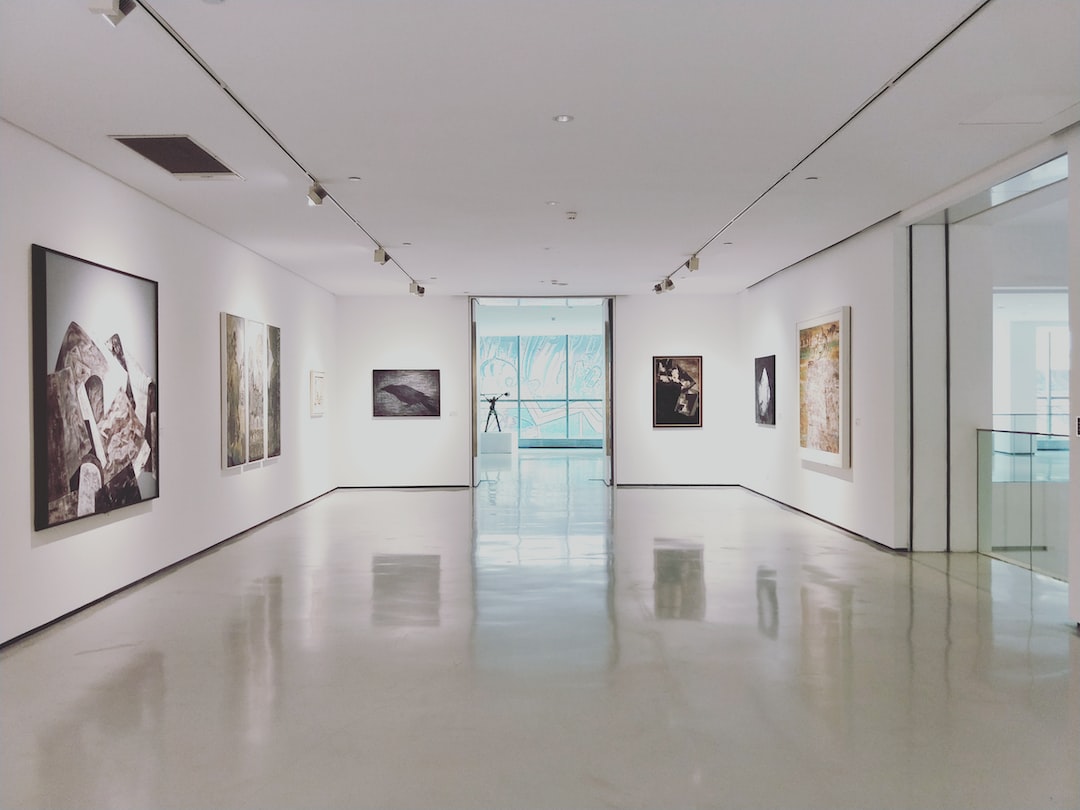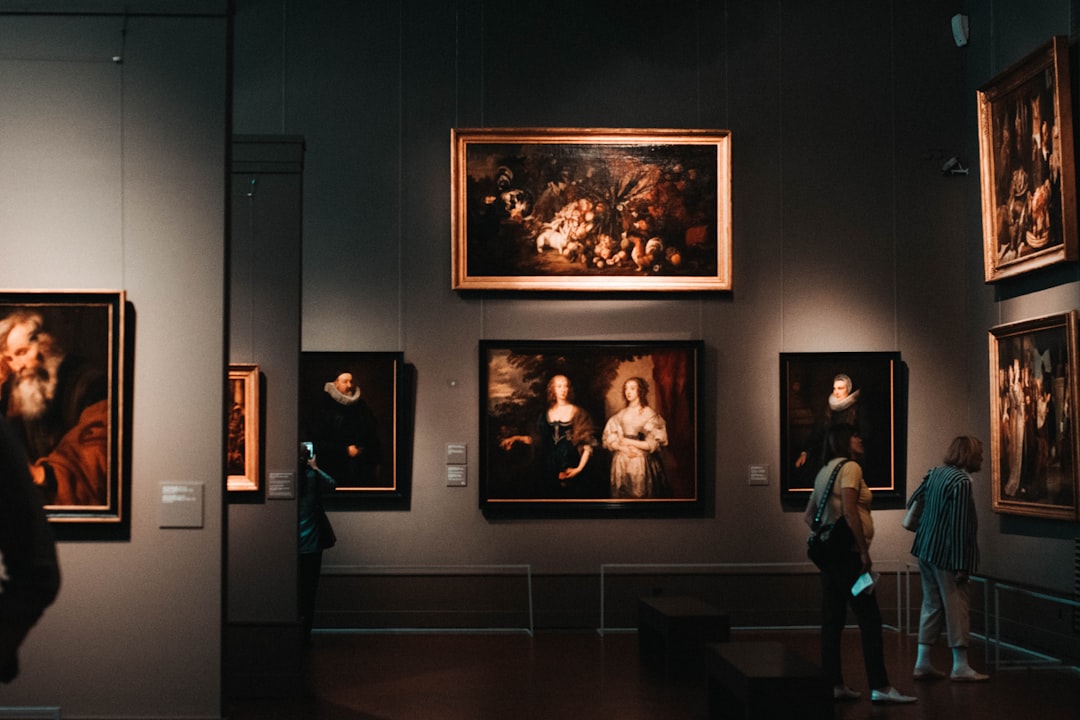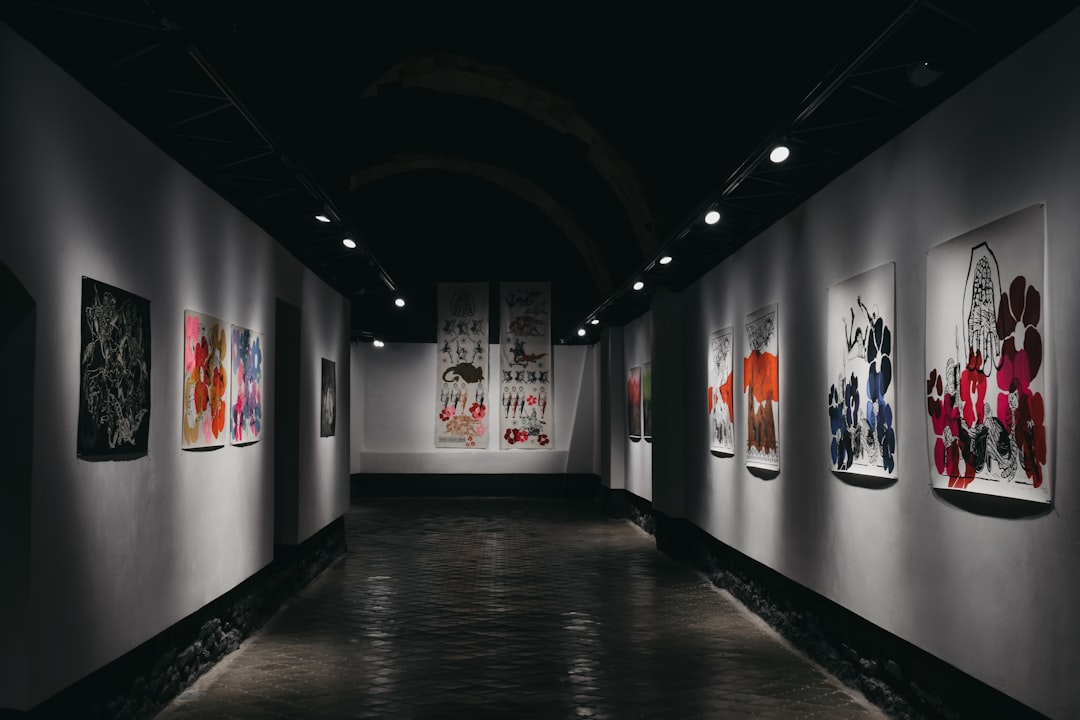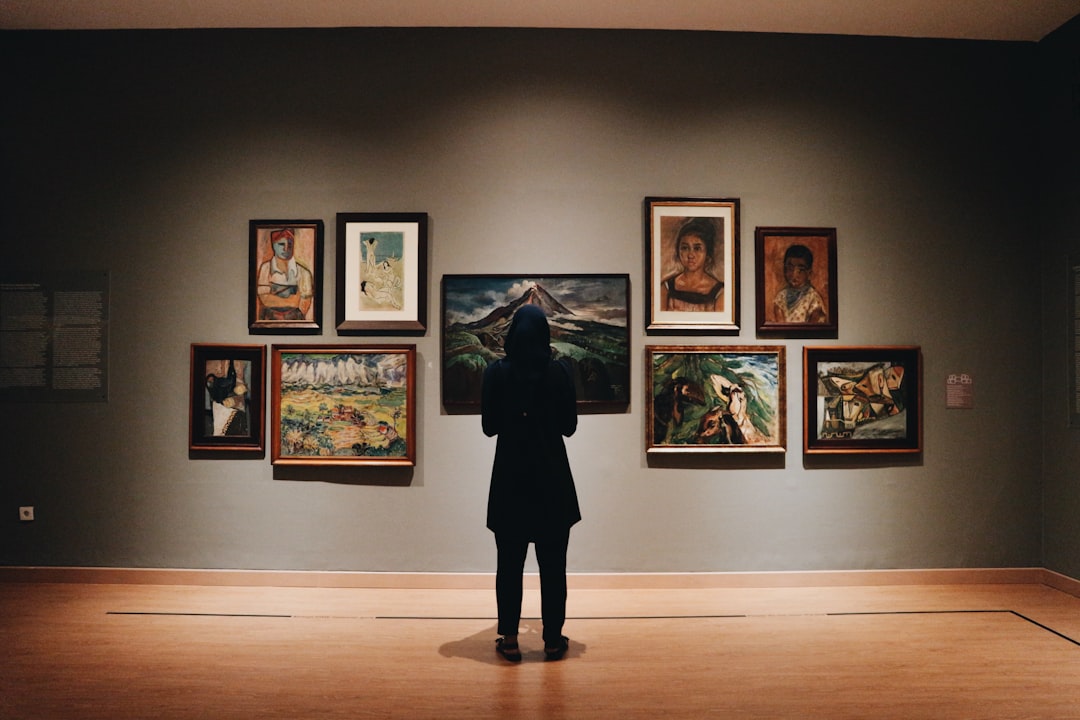Blockchain technology is revolutionizing the way we think about ownership, transactions, and authenticity. Originally developed as the backbone of cryptocurrencies like Bitcoin, blockchain has now expanded its reach into various industries, including art. With its unique features of decentralization, immutability, and transparency, blockchain has the potential to transform the art world as we know it.
At its core, blockchain technology is a decentralized, distributed ledger that records transactions on a peer-to-peer network. This means that there is no central authority controlling the database, and all participants in the network have equal say in validating and recording transactions. This opens up a world of possibilities for disrupting traditional models of ownership and value exchange, particularly in the art world.
Art has always been a prized possession, with ownership traditionally concentrated in the hands of a few wealthy collectors and institutions. However, blockchain technology can decentralize art ownership through tokenization and fractional ownership. By tokenizing art, it can be divided into smaller units that can be bought and sold by multiple owners. This enables more people to invest in art, making it more accessible and inclusive. Additionally, fractional ownership allows for shared ownership of a single piece of art, reducing the burden of maintenance and storage costs.
The use of blockchain technology can also streamline art transactions and reduce fraud through blockchain verification. With blockchain, each artwork would have a unique digital identity that is verified through the network. This makes it virtually impossible to duplicate or counterfeit artwork, ensuring its authenticity and value. Furthermore, the decentralized nature of blockchain ensures that all transactions are transparent and secure, reducing the risk of fraud and corruption.
Smart contracts, which are self-executing contracts with the terms of the agreement between buyer and seller being directly written into code, can also play a significant role in the art world. They can ensure that artists receive financial compensation and royalties for their work, eliminating the need for intermediaries like galleries and auction houses. This can help level the playing field for emerging artists and empower them to take control of their careers.
Blockchain technology also has the potential to facilitate a global art market and promote cultural exchange through borderless transactions. With blockchain, art sales can be made across the globe without worrying about currency exchange rates or international banking fees. This can also help promote cross-cultural dialogue and understanding, as art can be shared and appreciated across borders and boundaries.
Of course, there are also challenges and limitations to using blockchain technology in the art world. For example, the lack of regulation and standardization can make it difficult to ensure that all parties are playing by the same rules. Additionally, there may be resistance to change from traditional players in the art world who benefit from the status quo.
Overall, however, the potential for blockchain technology to disrupt and transform the art world is immense. By decentralizing art ownership, streamlining transactions, ensuring authenticity and financial compensation, and facilitating cross-cultural exchange, blockchain technology can help make art more accessible, inclusive, and equitable for everyone.
Decentralizing Art Ownership Through Tokenization and Fractional Ownership
When we think of art ownership, we often picture wealthy collectors hanging priceless masterpieces in their mansions. But what about the rest of us? In a world where art has become more of a commodity than a cultural experience, blockchain technology is changing the game by decentralizing ownership and opening up new opportunities for art lovers and creators alike.
One key way that blockchain is revolutionizing art ownership is through tokenization. Essentially, this means that a piece of art is divided into multiple digital tokens, each representing a fraction of the whole. These tokens can then be bought and sold on a decentralized marketplace, allowing anyone to invest in a piece of art – even if they don’t have millions of dollars to spare.
Fractional ownership also has the potential to democratize the art world by giving more people access to a wider range of works. Instead of only being able to afford one or two pieces, collectors can now invest in a portfolio of tokens representing various artworks. This creates a more diverse and inclusive art market, where the value of a piece is determined by its cultural significance and aesthetic appeal rather than by the whims of a few wealthy buyers.
Of course, there are still challenges and uncertainties when it comes to tokenization and fractional ownership in the art world. How do we determine the value of a token? What happens if a piece of art is damaged or destroyed? How do we ensure that investors are protected from fraud and mismanagement?
Despite these challenges, the potential benefits of blockchain-based art ownership are too great to ignore. By breaking down traditional barriers and empowering more people to invest in the art they love, we can create a more vibrant and accessible cultural landscape for everyone.
Instead of only being able to afford one or two pieces, collectors can now invest in a portfolio of tokens representing various artworks.
Streamlining art transactions and reducing fraud through blockchain verification
The art world has traditionally been an industry that operates on trust and reputation. Art collectors and dealers have relied on their personal networks and relationships to verify the authenticity and provenance of pieces. However, this system is not foolproof, and the art industry has experienced its fair share of scandals and controversies involving forged or misrepresented works.
Blockchain technology offers a solution to this problem by providing a secure, decentralized platform for verifying the authenticity and ownership of art pieces. By using encrypted digital tokens, art collectors can securely and transparently track the provenance of their works, as well as ensure that they are not purchasing counterfeit pieces.
The use of blockchain technology in the art world also has the potential to reduce transaction costs by eliminating the need for intermediaries such as auction houses or galleries. This could lead to lower prices for collectors and increased access to the art market for emerging artists.
Moreover, blockchain technology can be used to create smart contracts that automatically enforce the terms of a sale, ensuring that the artist receives the appropriate financial compensation for their work. This eliminates the need for lawyers or other intermediaries to mediate disputes, making the art market more efficient and transparent.
In addition to reducing fraud and increasing efficiency, blockchain technology can also help to democratize the art world by making it more accessible to people around the world. By facilitating borderless transactions, blockchain technology can help to promote cultural exchange and create a more diverse and vibrant art market.
Of course, there are also challenges and limitations when it comes to using blockchain technology in the art world. For example, some art collectors may be hesitant to embrace digital tokens as a legitimate form of ownership, and there may be technical barriers to implementing blockchain solutions on a large scale.
However, the potential benefits of using blockchain technology in the art world are too significant to ignore. By streamlining art transactions, reducing fraud, and promoting cultural exchange, blockchain technology has the potential to transform the art world in ways that we can only imagine.
However, the potential benefits of using blockchain technology in the art world are too significant to ignore.
Ensuring Artist Authenticity and Financial Compensation Through Smart Contracts
In the world of art, authenticity is key. It can mean the difference between a painting being worth millions of dollars or being a worthless forgery. Historically, it has been difficult for artists to prove the authenticity of their work and receive fair compensation for their talent. However, with the advent of blockchain technology, this is changing.
Smart contracts are one way that artists can ensure their authenticity and receive financial compensation for their work. Smart contracts are self-executing contracts with the terms of the agreement between buyer and seller being directly written into lines of code. These contracts can be programmed to verify the authenticity of the artwork and ensure that the artist receives a percentage of the sale whenever their work is sold.
One blockchain-based platform that is using smart contracts to ensure artist authenticity and financial compensation is Artory. Artory is a secure registry for art and collectibles that uses blockchain technology to provide an immutable record of ownership, provenance, and authenticity. By using Artory, artists can prove the authenticity of their work and ensure that they receive a percentage of the sale whenever their work is sold.
Additionally, smart contracts can be programmed to automatically pay artists royalties whenever their work is resold. This is important because in traditional art sales, the artist only receives a percentage of the sale the first time the work is sold. However, with blockchain technology, artists can receive a percentage of the sale every time their work is resold. This helps to ensure that artists are fairly compensated for their talent and hard work.
Overall, the use of smart contracts in the art world is a promising development. By ensuring artist authenticity and financial compensation, blockchain technology is helping to create a more fair and equitable art market.
Overall, the use of smart contracts in the art world is a promising development.
Facilitating a Global Art Market and Promoting Cultural Exchange through Borderless Transactions
The traditional art market has always been limited by geographical barriers, making it difficult for artists and collectors to participate in global art transactions. With the advent of blockchain technology, however, the barriers are crumbling, and the art world is becoming more accessible and more globalized than ever before.
Blockchain technology allows for borderless transactions, meaning that art collectors and investors from all over the world can participate in the same marketplaces without the need for intermediaries or middlemen. This creates new opportunities for artists to showcase their work and connect with a broader audience, and it also allows collectors to explore and invest in art from different cultures and regions.
Moreover, blockchain technology promotes cultural exchange by enabling artists from different parts of the world to collaborate and create new works of art together. Smart contracts can facilitate the creation of new collaborative projects, giving artists the resources they need to bring their creative ideas to life. This not only fosters cross-cultural understanding and appreciation but also helps to bring new art forms and styles to the forefront of the global art scene.
The borderless nature of blockchain transactions also helps to eliminate language barriers, as transactions can be conducted in any language, and the process is entirely transparent and secure. This promotes trust and confidence among art buyers and sellers, ensuring that everyone involved in the transaction is fully informed and protected.
However, there are still challenges that need to be addressed when it comes to facilitating a truly global art market. One of the most significant issues is the lack of standardization in the art world, which can make it difficult to create a universal platform for art transactions. There is also the issue of cross-border taxation and regulation, which can vary from country to country and often complicates the transaction process.
Despite these challenges, the potential benefits of a globalized art market facilitated by blockchain technology are immense. With the ability to connect artists and collectors from all over the world, blockchain technology is opening up new possibilities for creativity, innovation, and cultural exchange in the art world.
Blockchain technology allows for borderless transactions, meaning that art collectors and investors from all over the world can participate in the same marketplaces without the need for intermediaries or middlemen.
Challenges and Limitations of Using Blockchain Technology in the Art World
While blockchain technology offers numerous opportunities to revolutionize the art world, there are still some challenges and limitations to consider. One of the main challenges is the issue of adoption. While blockchain technology is gaining popularity in the art world, it is still a relatively new technology and many artists, collectors, and galleries may be hesitant to adopt it due to concerns about cost, complexity, and security.
Another challenge is the issue of scalability. As the art market continues to grow, the blockchain may face challenges in handling the volume of transactions involved. This could lead to slow transaction times and an increase in transaction fees. Furthermore, while blockchain technology can help reduce fraud and ensure authenticity, it cannot completely eliminate the risk of fraud or guarantee that all transactions will be legitimate.
Finally, there is the issue of regulation. As blockchain technology becomes more widely adopted in the art world, governments and regulatory bodies may struggle to keep pace with the changes. This could lead to increased regulation, which could potentially inhibit innovation and growth in the industry.
Despite these challenges and limitations, there is still great potential for blockchain technology to transform the art world. As more artists, collectors, and galleries adopt blockchain technology, it will become easier to address these challenges and overcome the limitations. By working together and exploring new ways to leverage the power of blockchain technology, we can create a more secure, transparent, and accessible art market for everyone.
As the art market continues to grow, the blockchain may face challenges in handling the volume of transactions involved.
Conclusion: The Future of Art on the Blockchain
As we come to the end of our exploration of blockchain technology in the art world, it is clear that the possibilities for growth and innovation are endless. Despite the challenges and limitations we have discussed, the potential for decentralization, verification, and global accessibility make blockchain a truly revolutionary tool for the art industry.
Through tokenization and fractional ownership, more people can now participate in the art market, regardless of their financial means. Blockchain verification also ensures that art transactions are secure and transparent, reducing the risk of fraud and increasing trust between buyers and sellers.
Additionally, smart contracts can ensure that artists are compensated fairly and that their authenticity is preserved. This is a crucial step towards building a more ethical and sustainable art market.
But perhaps the most exciting aspect of blockchain technology is its potential for cultural exchange. By facilitating borderless transactions, artists from all over the world can now connect with each other and share their work with a global audience.
Of course, there are still challenges to overcome. The art world is notorious for its resistance to change, and there will undoubtedly be pushback from those who prefer the traditional way of doing things. However, with more and more artists, collectors, and galleries recognizing the potential of blockchain, it is only a matter of time before it becomes the norm.
In conclusion, blockchain technology is transforming the art world in ways we could never have imagined. It is opening up new avenues for creativity, accessibility, and transparency, and paving the way for a more equitable and sustainable art market. As we move forward, let us embrace this new technology with open minds and a willingness to experiment, and see where it takes us. The possibilities are truly endless.





